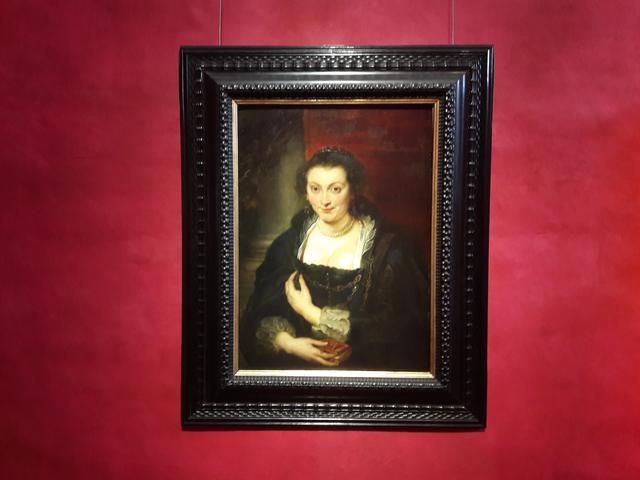portrait of isabella brant

The portrait of Isabella Brandt, the artist's first wife, was created by Pieter Paul Rubens a year before the woman's death.
The image shows the first wife of Pieter Paul Rubens shortly before his death in 1626. The style of the portrait is typically baroque. The woman's features are very realistic, but the background is totally inventive. This stratagem allows for the creation of a strong contrast that effectively puts the figure in the foreground. This idealization of the image is captured in the modeling of the hands and their arrangement. The hands slashed sharply against the woman's dark suit.
In the foreground, starting from the bottom, almost to the top edge of the painting, is the bust of Isabella Brandt. The woman is seated frontally, slightly turned to the left. The lower part of the painting is done in grayish colors. To the left of the Portrait of Isabella Brandt we can see a column with a base. On the right a heavy purple cloth fabric. Isabella Brandt wears a heavy, rich dark dress decorated with precious jewels and chains. Against this very dark fabric, the two painted hands stand out in the foreground. The position is very elegant and studied. The hands are noble and sharp. His right hand holds a brochure and, with his index finger, he opens the pages. The other hand is tilted towards the chest, higher. The sleeves of the rich dress are trimmed with light lace cuffs.
Around the woman's neckline, outside the dress, is a transparent lace collar. On her neck, Rubens's first wife wears a double-twisted pearl necklace. A tiara shines in her hair and gorgeous earrings in her ears. In general, the image of Isabella Brandt is that of a happy, rich and satisfied woman. Rubens painted his wife as a beautiful young woman, of mature age in the fullness of her vitality. It is not unusual for paintings to portray dead people as if to remind them of their presence. A famous example is the image of the brother of the Duke of Urbino painted by Piero della Francesca in his Flagellation.
The light weakly illuminates the background, near the shape of Isabella Brandt's hair and dress. In fact, there is a sort of slight glow around the head and the left profile of the dress. This resource allows Rubens to separate the woman's profile from the very dark background. Isabella Brandt's forehead and, especially her neckline with the right white collar, seem to emanate an ideal light and do not reflect ambient light. The dress absorbs most of the lighting and does not reflect it as well as the rest of the painting. The jewelry and accessories on the dress shine like the bright and intelligent eyes of women.
The background is a two-dimensional resource to highlight the woman's figure and does not contain significant information. Space disappears around the figure of Rubens' wife and contracts around her face. The focal center is therefore limited to the bust of Isabella Brandt and, later, her hands. The details with which the necklace was made, on the right the jewels and the parts of the dress give a certain nobility to the Portrait of Isabella Brandt.
© Tourblink